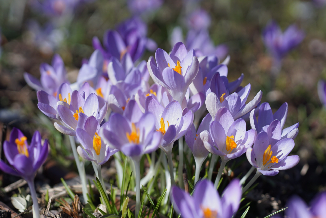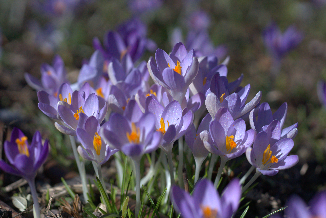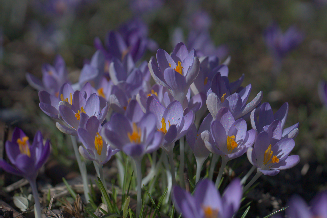Modern digital system cameras and also some digital compact cameras allow to create and to store images in a so-called raw format. A raw image contains
- the minimally pre-processed sensor data,
- meta-data about the picture such as camera model, lens model and camera settings under which the picture has been taken and
- possibly a fully processed preview image.
Raw images are the image format of choice for most serious professional or enthusiast photographers as this format provides the optimal base material for further processing, e.g., tonal adjustments, color grading and all kinds of geometric and lens corrections. Yet, dealing with raw files can be cumbersome. Each camera manufacturer uses its own proprietary raw file format for his cameras. Raw files cannot be displayed directly, the must be processed first. Therefore raw files are sometimes called digital negatives. Raw processing is usually carried out by specialized programs such as darktable or RawTherapee.
The Python packages rawpy, PIL (aka Pillow) and exifread allow to perform various tasks of raw image processing in Python. This is particularly useful for batch processing and prototyping of new image processing algorithms. In the following a few demonstrative examples are shown how to use rawpy, PIL and exifread.
Load rawpy and some further useful Python packages first:
import os from io import BytesIO import matplotlib.pyplot as plt import rawpy import exifread import numpy as np from PIL import Image
Read a raw image and extract some basic information about the image:
raw_filename = 'A1_07396.arw'
with rawpy.imread(raw_filename) as raw:
print(f'raw type: {raw.raw_type}') # raw type (flat or stack, e.g., Foveon sensor)
print(f'number of colors: {raw.num_colors}') # number of different color components, e.g., 3 for common RGB Bayer sensors with two green identical green sensors
print(f'color description: {raw.color_desc}') # describes the various color components
print(f'raw pattern: {raw.raw_pattern.tolist()}') # decribes the pattern of the Bayer sensor
print(f'black levels: {raw.black_level_per_channel}') # black level correction
print(f'white level: {raw.white_level}') # camera white level
print(f'color matrix: {raw.color_matrix.tolist()}') # camera specific color matrix, usually obtained from a list in rawpy (not from the raw file)
print(f'XYZ to RGB conversion matrix: {raw.rgb_xyz_matrix.tolist()}') # camera specific XYZ to camara RGB conversion matrix
print(f'camera white balance: {raw.camera_whitebalance}') # the picture's white balance as determined by the camera
print(f'daylight white balance: {raw.daylight_whitebalance}') # the camera's daylight white balance
raw type: RawType.Flat number of colors: 3 color description: b'RGBG' raw pattern: [[0, 1], [3, 2]] black levels: [512, 512, 512, 512] white level: 16383 color matrix: [[0.0, 0.0, 0.0, 0.0], [0.0, 0.0, 0.0, 0.0], [0.0, 0.0, 0.0, 0.0]] XYZ to RGB conversion matrix: [[0.5972999930381775, -0.16949999332427979, -0.04190000146627426], [-0.38260000944137573, 1.1797000169754028, 0.22930000722408295], [-0.06390000134706497, 0.13979999721050262, 0.5788999795913696], [0.0, 0.0, 0.0]] camera white balance: [2452.0, 1024.0, 2036.0, 1024.0] daylight white balance: [2.836125135421753, 0.9383336305618286, 1.409664511680603, 0.0]
Extract and print EXIF meta-data of the raw file:
with open(raw_filename, 'rb') as f:
tags = exifread.process_file(f)
for key, value in tags.items():
if key is not 'JPEGThumbnail': # do not print (uninteresting) binary thumbnail data
print(f'{key}: {value}')
Image SubfileType: Reduced-resolution image Image Compression: JPEG (old-style) Image ImageDescription: Image Make: SONY Image Model: ILCE-6300 Image Orientation: Horizontal (normal) Image XResolution: 350 Image YResolution: 350 Image ResolutionUnit: Pixels/Inch Image Software: ILCE-6300 v2.01 Image DateTime: 2019:02:24 12:56:34 Image Artist: Heiko Bauke Image Tag 0x014A: 145554 Image JPEGInterchangeFormat: 146594 Image JPEGInterchangeFormatLength: 454075 Image YCbCrPositioning: Co-sited Image Copyright: Heiko Bauke Image ExifOffset: 484 Image PrintIM: [80, 114, 105, 110, 116, 73, 77, 0, 48, 51, 48, 48, 0, 0, 3, 0, 2, 0, 1, 0, ... ] Image Tag 0xC634: [156, 201, 0, 0] Thumbnail SubfileType: Reduced-resolution image Thumbnail Compression: JPEG (old-style) Thumbnail ImageDescription: Thumbnail Make: SONY Thumbnail Model: ILCE-6300 Thumbnail Orientation: Horizontal (normal) Thumbnail XResolution: 72 Thumbnail YResolution: 72 Thumbnail ResolutionUnit: Pixels/Inch Thumbnail Software: ILCE-6300 v2.01 Thumbnail DateTime: 2019:02:24 12:56:34 Thumbnail Artist: Heiko Bauke Thumbnail JPEGInterchangeFormat: 38906 Thumbnail JPEGInterchangeFormatLength: 11192 Thumbnail YCbCrPositioning: Co-sited Thumbnail Copyright: Heiko Bauke EXIF ExposureTime: 1/2500 EXIF FNumber: 14/5
EXIF ExposureProgram: Aperture Priority EXIF ISOSpeedRatings: 200 EXIF SensitivityType: Recommended Exposure Index EXIF RecommendedExposureIndex: 200 EXIF ExifVersion: 0230 EXIF DateTimeOriginal: 2019:02:24 12:56:34 EXIF DateTimeDigitized: 2019:02:24 12:56:34 EXIF ComponentsConfiguration: YCbCr EXIF CompressedBitsPerPixel: 8 EXIF BrightnessValue: 6547/1280 EXIF ExposureBiasValue: 0 EXIF MaxApertureValue: 0 EXIF MeteringMode: Pattern EXIF LightSource: Unknown EXIF Flash: Flash did not fire, compulsory flash mode EXIF FocalLength: 55 EXIF MakerNote: [95, 0, 3, 16, 4, 0, 16, 0, 0, 0, 136, 8, 0, 0, 0, 32, 7, 0, 1, 0, ... ] EXIF UserComment: [0, 0, 0, 0, 0, 0, 0, 0, 0, 0, 0, 0, 0, 0, 0, 0, 0, 0, 0, 0, 0, 0, 0, 0, 0, 0, 0, 0, 0, 0, 0, 0, 0, 0, 0, 0, 0, 0, 0, 0, 0, 0, 0, 0, 0, 0, 0, 0, 0, 0, 0, 0, 0, 0, 0, 0] EXIF FlashPixVersion: 0100 EXIF ColorSpace: sRGB EXIF ExifImageWidth: 6000 EXIF ExifImageLength: 4000 Interoperability InteroperabilityIndex: R98 Interoperability InteroperabilityVersion: [48, 49, 48, 48] EXIF InteroperabilityOffset: 38554 EXIF FileSource: Digital Camera EXIF SceneType: Directly Photographed EXIF CustomRendered: Normal EXIF ExposureMode: Auto Exposure EXIF WhiteBalance: Auto EXIF DigitalZoomRatio: 1 EXIF FocalLengthIn35mmFilm: 82 EXIF SceneCaptureType: Standard EXIF Contrast: Normal EXIF Saturation: Normal EXIF Sharpness: Normal EXIF LensModel: Nikon AI-S Nikkor 55mm f/2.8 Micro
The embedded thumbnail image is extracted from a raw file next. The thumbnail is saved to disk and displayed. (Note that some raw formats have unusual bitmap thumbnails which may not be read correctly or not read at all.)
filename, _ = os.path.splitext(raw_filename)
with rawpy.imread(raw_filename) as raw:
try:
thumb = raw.extract_thumb()
except rawpy.LibRawNoThumbnailError:
print('no thumbnail found')
else:
if thumb.format in [rawpy.ThumbFormat.JPEG, rawpy.ThumbFormat.BITMAP]:
if thumb.format is rawpy.ThumbFormat.JPEG:
thumb_filename = filename + '_thumb.jpg'
with open(thumb_filename, 'wb') as f:
f.write(thumb.data)
thumb_rgb = Image.open(BytesIO(thumb.data))
else:
thumb_filename = filename + '_thumb.tiff'
thumb_rgb = Image.fromarray(thumb.data)
thumb_rgb.save(filename, 'tiff')
plt.imshow(thumb_rgb)
plt.axis('off')
else:
print('unknown thumbnail format')
The next example shows how to process a raw image via rawpy to create an image that is suitable for display. Camera white balance settings are used.
with rawpy.imread(raw_filename) as raw:
image = raw.raw_image
rgb = raw.postprocess(rawpy.Params(use_camera_wb=True))
plt.imshow(rgb)
plt.axis('off')
A raw image is not suitable for display. The function postprocess was utilized before to turn a raw image into an image that can be displayed. In the following, a minimalistic raw conversion into sRGB is performed that yields an image that is suitable for display. The employed procedure is rather general, but it assumes that the camera features a Bayer-pattern
[codesyntax lang=”text”]
sensor. The fundamental element of a Bayer-sensor pattern consists of 2 times 2 pixels of 3 or of 4 different colors. The following steps are required to convert Bayer pixel data into RGB pixels:
- Subtract the black level from raw data.
- Amplify the 3 or 4 color components by the white balance coefficients.
- Demosaic the Bayer pattern. Raw image data contains only one color component at each pixel position. Demosaicing reconstructs a full color image from the incomplete color samples output from the image sensor overlaid with a color filter array, i.e., the Bayer pattern. Here, a simple down sampling approach is implemented for demonstration. This is not a method suitable for high-quality raw conversion.
- Transform the 3 or 4 camera color components into the 3 color components of linear sRGB. Transformations between different color spaces are mediated by matrices. The transformation from linear sRGB into the camera’s primary colors is given by the matrix product of the transformation matrix that transforms color from sRGB into the XYZ color space and the camera specific matrix that turns XYZ color into camera primaries. The transformation matrix for converting from the camera’s primary colors into sRGB is just the (pseudo-)inverse of this product. Note that the transformation matrix is normalized before inversion in such a way that white in sRGB (all components equal to unity) maps to white in the space of camera’s primaries. See also Processing RAW Images in MATLAB for details.
- In a last step, the sRGB gamma correction is applied.
The end result of this procedure is usable but looks rather dull and is lacking contrast. This can be fixed by further processing steps, e.g., the application of an S-shaped tone curve.
with rawpy.imread(raw_filename) as raw:
# get raw image data
image = np.array(raw.raw_image, dtype=np.double)
# subtract black levels and normalize to interval [0..1]
black = np.reshape(np.array(raw.black_level_per_channel, dtype=np.double), (2, 2))
black = np.tile(black, (image.shape[0]//2, image.shape[1]//2))
image = (image - black) / (raw.white_level - black)
# find the positions of the three (red, green and blue) or four base colors within the Bayer pattern
n_colors = raw.num_colors
colors = np.frombuffer(raw.color_desc, dtype=np.byte)
pattern = np.array(raw.raw_pattern)
index_0 = np.where(colors[pattern] == colors[0])
index_1 = np.where(colors[pattern] == colors[1])
index_2 = np.where(colors[pattern] == colors[2])
index_3 = np.where(colors[pattern] == colors[3])
# apply white balance, normalize white balance coefficients to the 2nd coefficient, which is ususally the coefficient for green
wb_c = raw.camera_whitebalance
wb = np.zeros((2, 2), dtype=np.double)
wb[index_0] = wb_c[0] / wb_c[1]
wb[index_1] = wb_c[1] / wb_c[1]
wb[index_2] = wb_c[2] / wb_c[1]
if n_colors == 4:
wb[index_3] = wb_c[3] / wb_c[1]
wb = np.tile(wb, (image.shape[0]//2, image.shape[1]//2))
image_wb = np.clip(image * wb, 0, 1)
# demosaic via downsampling
image_demosaiced = np.empty((image_wb.shape[0]//2, image_wb.shape[1]//2, n_colors))
if n_colors == 3:
image_demosaiced[:, :, 0] = image_wb[index_0[0][0]::2, index_0[1][0]::2]
image_demosaiced[:, :, 1] = (image_wb[index_1[0][0]::2, index_1[1][0]::2] + image_wb[index_1[0][1]::2, index_1[1][1]::2]) / 2
image_demosaiced[:, :, 2] = image_wb[index_2[0][0]::2, index_2[1][0]::2]
else: # n_colors == 4
image_demosaiced[:, :, 0] = image_wb[index_0[0][0]::2, index_0[1][0]::2]
image_demosaiced[:, :, 1] = image_wb[index_1[0][0]::2, index_1[1][0]::2]
image_demosaiced[:, :, 2] = image_wb[index_2[0][0]::2, index_2[1][0]::2]
image_demosaiced[:, :, 3] = image_wb[index_3[0][0]::2, index_3[1][0]::2]
# convert to linear sRGB, calculate the matrix that transforms sRGB into the camera's primary color components and invert this matrix to perform the inverse transformation
XYZ_to_cam = np.array(raw.rgb_xyz_matrix[0:n_colors, :], dtype=np.double)
sRGB_to_XYZ = np.array([[0.4124564, 0.3575761, 0.1804375],
[0.2126729, 0.7151522, 0.0721750],
[0.0193339, 0.1191920, 0.9503041]], dtype=np.double)
sRGB_to_cam = np.dot(XYZ_to_cam, sRGB_to_XYZ)
norm = np.tile(np.sum(sRGB_to_cam, 1), (3, 1)).transpose()
sRGB_to_cam = sRGB_to_cam / norm
if n_colors == 3:
cam_to_sRGB = np.linalg.inv(sRGB_to_cam)
else: # n_colors == 4
cam_to_sRGB = np.linalg.pinv(sRGB_to_cam)
image_sRGB = np.einsum('ij,...j', cam_to_sRGB, image_demosaiced) # performs the matrix-vector product for each pixel
# apply sRGB gamma curve
i = image_sRGB < 0.0031308
j = np.logical_not(i)
image_sRGB[i] = 323 / 25 * image_sRGB[i]
image_sRGB[j] = 211 / 200 * image_sRGB[j] ** (5 / 12) - 11 / 200
image_sRGB = np.clip(image_sRGB, 0, 1)
# show image
plt.axis('off')
plt.imshow(image_sRGB)
A Jupyter notebook version of this blog post is available on GitHub.


